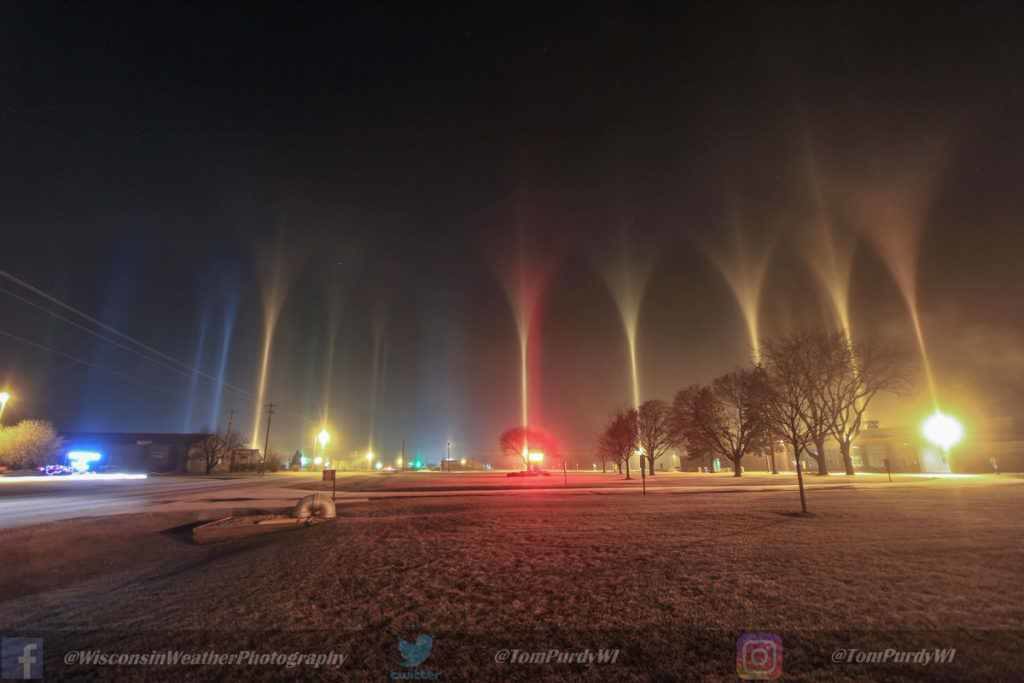
© Tom PurdyAmazing light pillars appear over Beloit, Wisconsin.
A rare phenomenon called light pillars were seen beaming up to the night's sky in Beloit, Wisconsin, on Sunday evening.
The National Weather Service (NWS) reported over five hours of freezing fog in that area, which create the perfect conditions for light pillars.
Light pillars are an optical phenomenon caused when light is refracted by ice crystals. These lights tend to take on the color of the light source.
"They appear as beams of light to the observer. It is usually caused by street lights. However, any source of light can create a light pillar given proper conditions," AccuWeather Meteorologist David Samuhel said.
For ice crystals to form, the conditions need to be extremely calm and cold, without wind. For the light pillars to show, the ice crystals need to be near the ground.
"Typically, ice crystals are small enough to remain suspended in the air and only form when temperatures are below zero [F]," Samuhel said. "In most instances, temperatures are minus 10 to 20 degrees or colder."

Comment:
Nemesis - The Sun's Evil Twin Brother
Nemesis - The Sun's long-lost twin
The Death of Nemesis: The Sun's Distant, Dark Companion
Getting WISE About Nemesis
Nemesis: Does the Sun Have a 'Companion'?
Study: Our sun probably has an evil twin called Nemesis
Sott Exclusive: Nemesis, not 'Nibiru' - Clarifying mainstream reports about 'a large ninth planet' that periodically sends comets our way